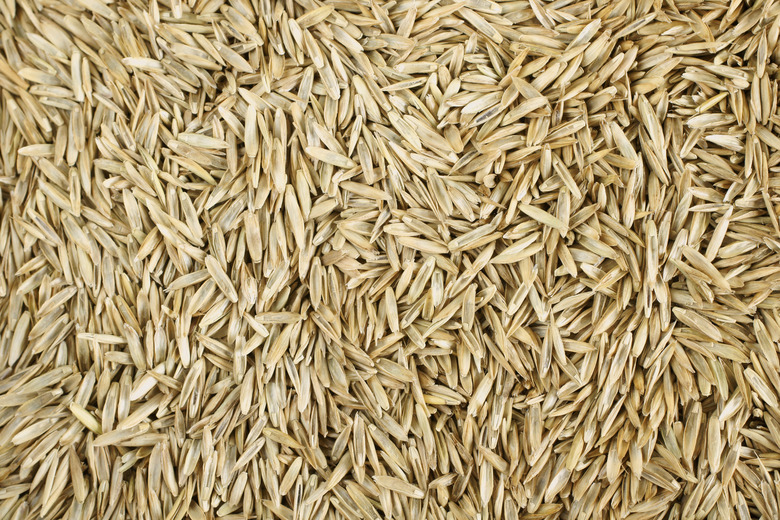When Can I Plant Grass Seed After Crabgrass Killer?
Crabgrass killer doesn't always differentiate between a germinating crabgrass (Digitaria spp.) seed and a lawn grass seed. That can add a timing element to your seeding process — you might need to work in extra time so the crabgrass preventer doesn't keep your grass seed from growing. Not all crabgrass killers work the same way, and they don't all have waiting times.
Crabgrass killer doesn't always differentiate between a germinating crabgrass (Digitaria spp.) seed and a lawn grass seed. That can add a timing element to your seeding process — you might need to work in extra time so the crabgrass preventer doesn't keep your grass seed from growing. Not all crabgrass killers work the same way, and they don't all have waiting times.
Pre-emergent Crabgrass Killer
Some crabgrass preventer manufacturers recommend waiting at least four months after applying the product before planting grass seed. Crabgrass preventers work by killing the annual weeds when they first poke out of the seeds, immediately after germination. This means the pre-emergent controls only work when applied near the time the seeds germinate — which is about the same time many types of grass begin to germinate. Every crabgrass preventer contains different chemicals and proportions, so some work better when spread close to seeding time. In general, most combinations of fertilizer and crabgrass preventer, such as those containing the active ingredient pendimethalin, need time to lose effectiveness before you plant grass seed. While instructions vary by product, and you should follow the label instructions, a typical application rate would be 2 pounds for each 1,000 square feet of lawn, applied with a spreader. When working with chemicals, wear long pants, long sleeves, sturdy shoes and socks. Some labels direct you to wear gloves, goggles or breathing equipment, too.
- Crabgrass killer doesn't always differentiate between a germinating crabgrass (Digitaria spp.)
- Every crabgrass preventer contains different chemicals and proportions, so some work better when spread close to seeding time.
Faster Options
When you're looking for a way to kill crabgrass that doesn't include fertilizer in the mix, you can spread crabgrass preventers with siduron as the active ingredient at the same time as the seed. Mix 1 1/2 to 4 1/2 ounces of siduron with 1 gallon of water in a garden sprayer to treat 1,000 square feet. With some grass seed, such as Kentucky bluegrass (Poa pratensis), which grows in U.S. Department of Agriculture plant hardiness zones 3 through 8, you can apply 1/2 ounce of dithiopyr in each 1 gallon of water three to 10 days after the seedlings emerge to kill crabgrass. A gallon should treat about 1,000 square feet. Use a garden sprayer to apply dithiopyr.
Weed and Seed
Some crabgrass preventers combined with seed-starter fertilizers, such as those containing the mesotrione herbicide, are designed for application at the same time as grass seed. You apply the product before you water the grass seed for the first time at a rate of 4 1/3 pounds per 1,000 square feet, using a seed spreader. These weed-and-feed options don't work with all types of grass seed, so check the manufacturer's label for appropriate varieties. These tend to work better with cool-season grasses such as Kentucky bluegrass.
- When you're looking for a way to kill crabgrass that doesn't include fertilizer in the mix, you can spread crabgrass preventers with siduron as the active ingredient at the same time as the seed.
- With some grass seed, such as Kentucky bluegrass (Poa pratensis), which grows in U.S. Department of Agriculture plant hardiness zones 3 through 8, you can apply 1/2 ounce of dithiopyr in each 1 gallon of water three to 10 days after the seedlings emerge to kill crabgrass.
Seeding First
If you decide to apply a pre-emergent crabgrass killer shortly after grass seeds germinate, while your grass is still young and tender, wait until you've mowed the grass at least three times ensures the blades are strong enough to withstand the herbicide without damage. Hand-pull any crabgrass that pokes through during that time.
